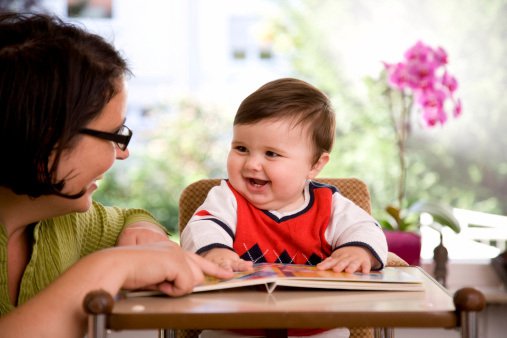Help

1. When should learning start?
There is a myth that it is impossible to become a true bilingual if both languages are not learnt at a very early age. However, as mentioned in a previous post, it is possible to become bilingual at any time of life: childhood, adolescence and even adulthood. It is good to remember that a majority of bilingual children learn one language first in their families. They are monolingual before starting a second language at school and then eventually learn the other language.
2. What language strategy should you follow at home?
Parents who decide to introduce their children to two languages at an early stage often adopt a language strategy. The best known is the so-called "One parent, one language", where each parent speaks a different language to the child. The advantage is that the child receives a double language skills from the start and naturally.
The big disadvantage though is that one of the two languages is probably a minority in the region or country, and pretty soon the child will slip to the single use of the most important language, especially if the parents are also bilingual.
Finally, some parents opt for the strategy, "A language first and then the other," where one starts with a single language, preferably lower, so that it is well established, and the other is introduced later. These strategies are explained in many books on bilingualism and specialized websites.
3. Will the child feel a real need to use each language?
Children are terribly pragmatic when it comes to languages. If they really need two or more languages, they will become bi- or multilingual. If the need fades, they will return to monolingualism. For them, the language requirement is clear: a language used to communicate with parents or relatives, participate in activities with other children at school or on the playground, interact with people around the family or neighborhood, etc.
If they feel that need, and if other factors are present (see below), then they will acquire the language. If the need disappears, or was never really there, as in the case where one parent speaks the other language fluently but claims the opposite, then the language will be gradually forgotten.
4. Will the child receive enough language input?
To develop a language, enough language input will be needed in different situations from people who play an important role in the life of the child: parents, members of the extended family, teachers, friends, etc.
The research of Professor P. Kuhl in particular has shown that to develop the sounds of the categories of a language, the child needs that the contribution comes from a person who interacts with him and not an audiovisual source only (TV, DVD, audio, etc.). The contribution must be bilingual but also monolingual, ie from persons who know only one of the two languages. Later, the written language will be a major support for the development of vocabulary, syntax, but also cultural aspects.
5. What other support will be available?
The use of children's language by other family members such as grandparents, especially the minority language, will be very important. Besides the language input, it will show the value attached to each language. Given that children are highly sensitive to attitudes towards languages and to bilingualism, it is important that they are the most positive possible.
- FAQ Author: vincent
 June 2015
June 2015
Related topics:
- How to have fun while learning English.
- How to enter Mandarin characters by typing Pinyin syllables in electronic format? - a beginner’s experience
Comments
 1
1
 1
1
 1
1
 1
1
 1
All
1
All
 | ALBARRAOctober 2015 Thanks a lot for this valuable article |
 English
English









































